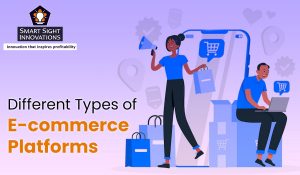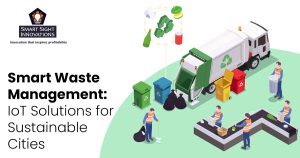 The world of e-commerce is constantly evolving. The drastic developments in communications and technology have led to e-commerce becoming increasingly popular, significantly impacting people’s daily lives. Although it is a relatively recent phenomenon, it is transforming and displacing current business and trade practices.
The world of e-commerce is constantly evolving. The drastic developments in communications and technology have led to e-commerce becoming increasingly popular, significantly impacting people’s daily lives. Although it is a relatively recent phenomenon, it is transforming and displacing current business and trade practices.
What Is an E-commerce Platform?
E-commerce is any type of business transaction that involves the processing and transmission of digital data (text, voice and visual pictures) involving individuals and organizations. The e-commerce platform is a software application that:
- Supports online buying and selling
- Helps organizations manage their website effectively and carry out marketing and operational activities to support their online business
- Maintains relationships and carries out business transactions including selling information, services and goods
- Assists in production, distribution and maintenance of goods and services
- Helps in business planning by obtaining product details, distributing the product information in the market and establishing contracts between buyers and sellers
- Involves making deals, sending money and obtaining financial services
Types of E-commerce Platforms
Some common types of e-commerce platform options are mentioned below. You can alternatively choose from the ten best platforms for building e-commerce websites based on your market research.
-
Open-source e-commerce platforms
IT and development organizations frequently use open-source e-commerce platforms as they help them control their e-commerce environment. This platform gives full access to the source code and provides everything you need to develop an e-commerce website while giving you the freedom to customize it according to your needs. If you have technical knowledge or want to engage a web developer, you can establish a user-friendly and sustainable online store.
A majority of open-source platform suppliers offer direct download links on their websites, while some may ask you to register. Several platforms are accessible on an online open-source software resource like SourceForge. Many open-source e-commerce platforms allow apps and extensions that offer additional functionality and customization possibilities.
-
SaaS (software-as-a-service) e-commerce platforms
A SaaS e-commerce platform is a cloud-based online store that is accessible through any web browser. You simply rent the platform rather than create and develop a custom or an open-source solution. SaaS e-commerce platforms are less expensive than open-source options when production and operation costs are taken into account. The SaaS supplier handles all the responsibilities associated with managing your software including payment card industry (PCI) compliance, hosting, security and product upgrades.
E-commerce platforms usually roll out some new features every year to help their clients expand their online businesses. With SaaS e-commerce, you can take advantage of these new capabilities as soon as they are released. It is the simplest and the fastest option to start a web store as it is neither installed nor maintained by the users, thus helping your company to go to the market quickly.
-
CaaS (commerce-as-a-service) e-commerce platforms
CaaS gives businesses a platform to cut costs and optimize resource utilization. When using CaaS, your front-end may continue to be your responsibility even though business data and computing are moved to the cloud. Marketers do not need a developer’s assistance to make any changes to the website as the CaaS service provider does this without affecting back-end functions like product management, inventory management and security.
Clients who use more content-driven methods (such as blog posts, social and videos) of selling items can use the CaaS strategy. It is a smart strategy that enables your company to keep up with the current technological advancements without incurring significant costs. Headless commerce platforms are a version of the CaaS e-commerce that separates the shopping cart from the CMS (content management system – a computer software system that controls how digital information is created and changed).
Brands can employ a CMS like WordPress or Drupal or a design experience platform (DXP) like Adobe Experience Manager or Bloomreach. An independent e-commerce shopping cart solution can then be plugged in.
-
PaaS (platform-as-a-service) e-commerce platforms
PaaS provides a real-time environment making it simple for programmers to build, test, use and publish web applications. Cloud service providers typically offer these applications through a pay-as-you-use model. The back-end flexibility is handled by the cloud service provider, relieving the end users of the responsibility of maintaining the infrastructure. PaaS providers offer the following:
- Programming languages like Java, PHP, Ruby and Pearl for developers to build applications
- Application frameworks like Node.js, Drupal, Joomla, WordPress, Spring, Play, Rack and Zend to easily understand the application development
- Databases like ClearDB, PostgreSQL, MongoDB and Redis to connect with the applications
PaaS allows developers to focus on creating and innovating instead of managing infrastructure. To begin creating applications, developers merely need a PC and an internet connection and there is no requirement for initial hardware and software investments. Some providers additionally offer pre-built business functionalities so that users can avoid making a fresh start and rather focus solely on their projects.
Choosing Your E-commerce Platform
Every online business has different requirements, therefore picking the best e-commerce software development model for your business certainly depends on the platform’s capacity to address the everyday problems specific to your business. You will need to pick the best depending on your traffic, site size, budget, web development expertise and the number of things you are selling. The platform should help you with the number of API (application programming interface) calls accessible, the effectiveness of those APIs and whether or not the required APIs are present.
Before choosing an e-commerce platform, you need to understand how much you’re willing to spend. If it is a standalone platform you will need to look into how much other providers charge and for all-in-one hosts you have the option to choose a premium subscription that has all of these capabilities and is still within your price range. The web design should deliver a creative user experience from the landing page through the checkout, encouraging customers to come back.














